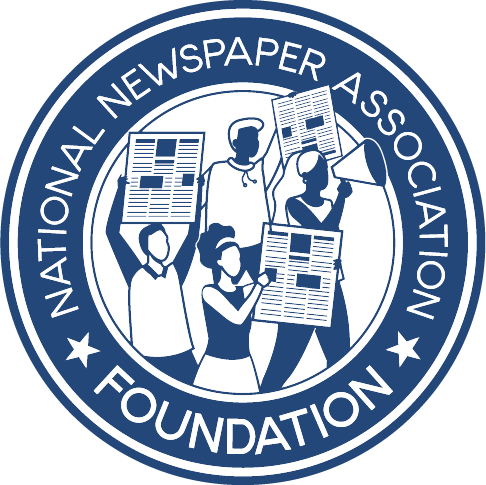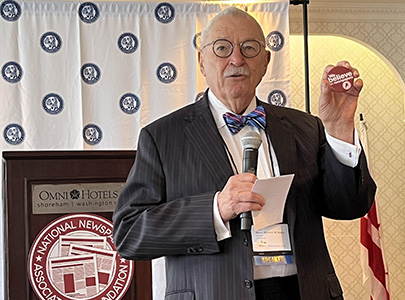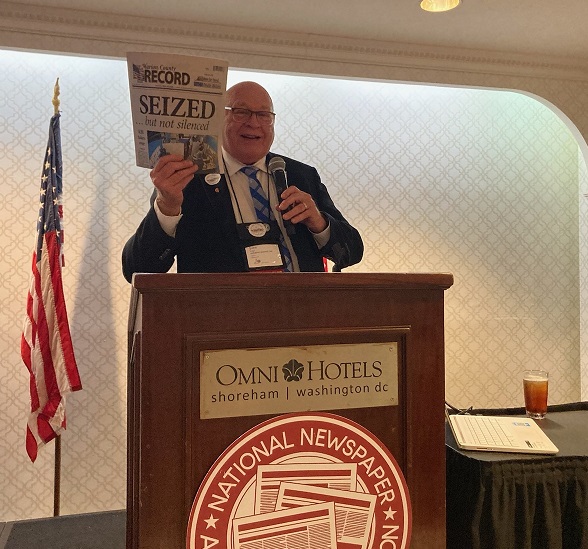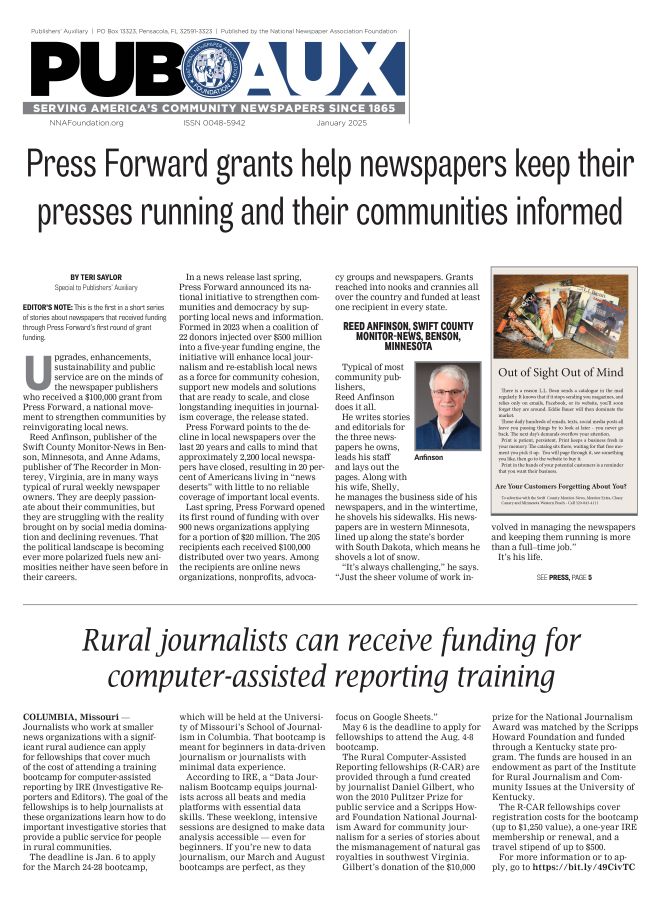A First Amendment case that may be key to Trump’s Senate trial
First Five by the Freedom Forum Institute
Feb 4, 2021
TONY MAURO
Download Word doc here.
Former President Donald Trump’s fiery Jan. 6 speech, made just before the U.S. Capitol riot began, led to his impeachment by the House of Representatives on a charge of “incitement of insurrection.”
But as the Senate prepares for Trump’s trial to resume Feb. 9, Harvard law professor Alan Dershowitz and other scholars have pointed to a 1969 Supreme Court decision that, in their view, gives First Amendment protection to speakers who urge listeners to use force in certain circumstances. The decision strictly defines the legal concept of “incitement.” It is certain to be invoked as a reason Trump could avoid conviction, assuming the trial touches on the riot, rather than other issues.
The case, titled Brandenburg v. Ohio, struck down a law that was used to prosecute Clarence Brandenburg, a Ku Klux Klan leader. Speaking at a rally in rural Ohio in 1964, Brandenburg said “revengeance” [sic] was needed against government institutions for suppressing the Caucasian race. Interestingly, he said that the “revengeance” would be wrought by “marching on Congress July the Fourth, four hundred thousand strong.”
The high court ruled that state laws making it a crime merely to advocate the use of violence violate the First Amendment. Only when the advocacy is aimed at inciting “imminent lawless action,” and is likely to succeed, may government prohibit it, the court stated unanimously.
Scholars who disagree that the Brandenburg ruling protects Trump argue he unequivocally incited imminent lawless action through comments he made shortly before the rally including, “You’ll never take back our country with weakness. You have to show strength and you have to be strong,” and “If you don't fight like hell, you're not going to have a country anymore.” Harvard Law School’s Einer Elhauge asserted in a Washington Post column, “Trump’s conduct clearly meets the legal standard that Brandenburg set.”
As the sides invoke the ruling to support their positions in the coming days, here is a primer on Brandenburg v. Ohio.
DATE: Decided June 9, 1969
IMPACT: The Brandenburg decision is seen as one of the most expansive interpretations of the First Amendment ever announced by the Supreme Court. The late New York Times columnist Anthony Lewis wrote that Brandenburg “gave the greatest protection to what could be called subversive speech that it has ever had in the United States, and almost certainly greater than such speech has in any other country.”
BACKGROUND: Following the assassination of President William McKinley in 1901 by an anarchist and the start of the communist movement in 1917, states began passing anti-sedition laws and so-called “criminal syndicalism” statutes. These laws, passed in 33 states, prohibited teaching or advocating the use of violence or crime to bring about political or economic change. The motivation behind the syndicalism laws in most cases was to discourage the spread of socialist or communist anti-capitalist views.
The Brandenburg case concerned not a communist, but a Klan leader. With the cameras of a local TV crew rolling, the red-hooded Clarence Brandenburg spoke to a Klan rally held at a farm in Hamilton County, Ohio, and made a threat laced with racist slurs: “We’re not a revengent organization, but if our president, our Congress, our Supreme Court, continues to suppress the white, Caucasian race, it’s possible that there might have to be some revengeance.” His pledge to march “on Congress July the Fourth” could not fit the definition of “imminent lawless action.”
Based on his speech, Brandenburg was convicted for violating the state’s criminal syndicalism law, fined $1,000 and sentenced to one to 10 years in prison. He appealed, challenging the law as a violation of his free speech rights. The Supreme Court of Ohio dismissed the appeal, setting the stage for U.S. Supreme Court review.
VOTE: Brandenburg won. The eight sitting justices at the time were Chief Justice Earl Warren and Justices Hugo Black, William O. Douglas, John M. Harlan, William J. Brennan Jr., Potter Stewart, Byron White and Thurgood Marshall. The ruling was issued unsigned, rather than under the name of a specific justice. There were no dissents.
Tony Mauro is contributing U.S. Supreme Court correspondent for the National Law Journal and ALM Media and a special correspondent for the Freedom Forum. This article includes excerpts from Mauro’s 2006 book, “Illustrated Great Decisions of the Supreme Court, Second Edition.”










